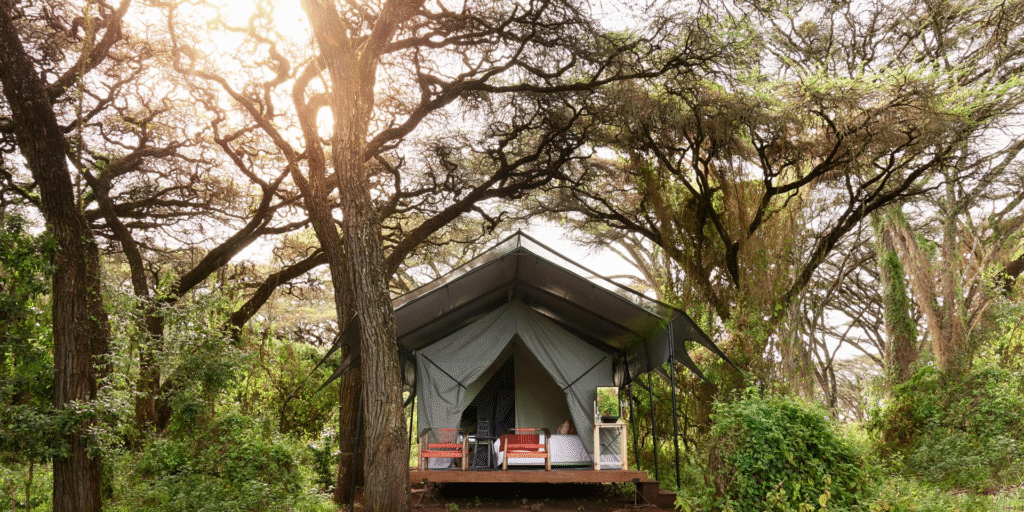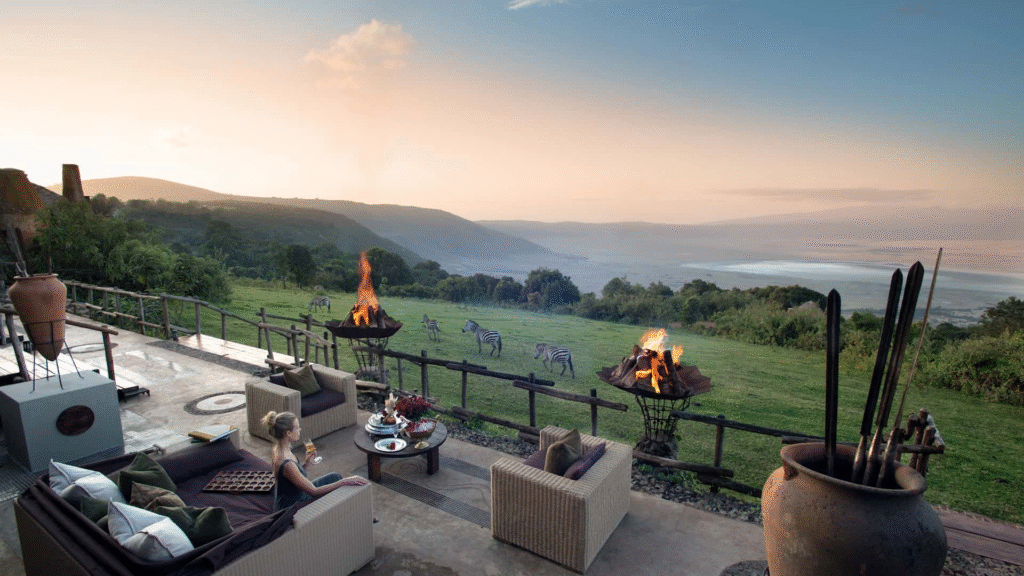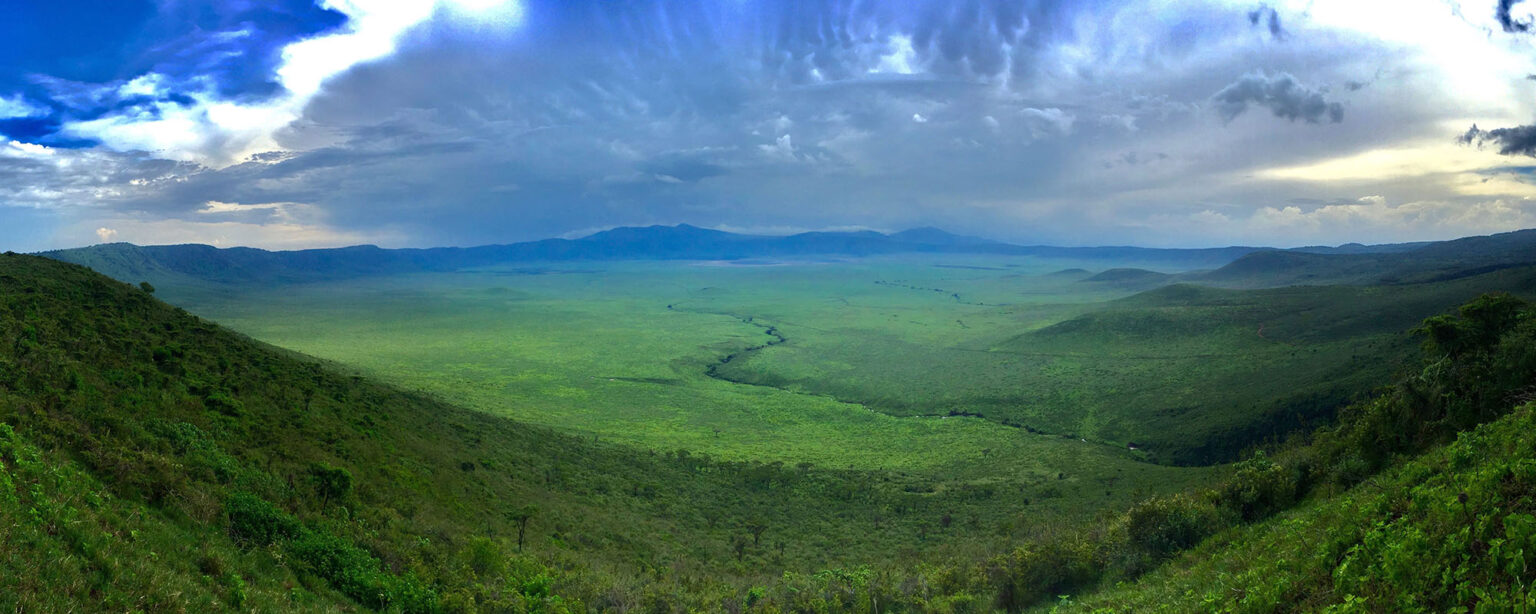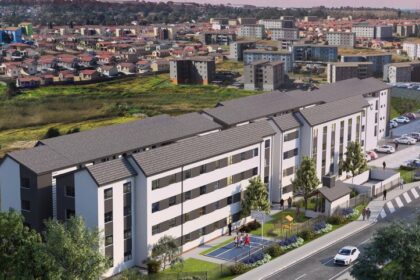At a Glance
- Ngorongoro Crater redefines East Africa’s luxury safari with privacy, comfort, and conservation focus.
- Top crater-rim lodges offer fine dining, helicopter transfers, and panoramic wildlife views.
- Luxury stays average $1,200 nightly, reflecting premium conservation and private-guided experiences.
Tanzania’s Ngorongoro Crater is setting a new standard for East Africa’s luxury safaris in 2025, blending contemporary comfort, private conservation, and close-up wildlife encounters in one of the world’s most striking natural landscapes.
For travelers seeking both adventure and privacy, Ngorongoro delivers a compact yet immersive safari experience.
The UNESCO World Heritage site remains the centerpiece of Tanzania’s luxury circuit, where crater-rim lodges offer sweeping views, fine dining, and helicopter transfers that can cut the trip from Kilimanjaro Airport to under an hour.
This year’s guide explores how to plan a top-tier Ngorongoro escape—from the best times to visit and where to stay, to budgeting tips, sustainability efforts, and the factors shaping a fresh wave of high-end tourism in the region.
Why Ngorongoro matters
Set within the world’s largest intact volcanic caldera, the Ngorongoro Conservation Area stands as a living stage for East Africa’s wildlife drama.
Lions, elephants, and rhinos roam freely across vast plains, while flamingos gather in the crater’s reflective soda lakes. Few places pack so much biodiversity into such an accessible area.
Guests can move from a sunrise lion sighting to a crater-view breakfast within minutes—a rhythm that suits travelers who want an efficient but unhurried safari.
Positioned between Serengeti National Park and Lake Manyara, Ngorongoro naturally anchors many of Tanzania’s most exclusive itineraries.
When to go: Timing shapes the experience
The dry season, from June through October, offers the clearest skies and most concentrated wildlife activity—ideal for photographers, honeymooners, and first-time safari guests.
Between March and May, the green season transforms the crater into a lush, cinematic landscape with fewer crowds and cooler evenings.
Those months are favored by travelers seeking tranquility, wellness retreats, or private-guided experiences.

Where to stay: Heritage meets modern comfort
Ngorongoro’s premier lodges, including andBeyond Ngorongoro Crater Lodge, The Highlands by Asilia, and Sanctuary Ngorongoro Crater Camp, continue to set the bar for design and service.
In 2025, new suites and eco-focused refurbishments are redefining the guest experience—think crater-facing terraces, in-room spas, and guided interactions with Maasai communities.
For travelers choosing where to stay, focus on properties with direct crater views, discreet transfers, and fewer than 20 suites. Personalized attention, rather than sheer scale, defines today’s luxury safari experience.

What it costs: Planning ahead
Because Ngorongoro operates under strict conservation rules, travelers should expect premium pricing. Park fees, crater descent permits, and vehicle tariffs are often bundled into all-inclusive packages offered by top lodges, covering transfers, guides, and multi-course dining.
For those booking privately, the Ngorongoro Conservation Area Authority updates its fee schedule each year. A realistic budget for a luxury stay starts around $1,200 per person per night, including conservation contributions and private guiding.
Whether you arrive by helicopter or 4×4, Ngorongoro Crater remains one of Africa’s most breathtaking natural theaters—proof that true luxury lies not only in comfort, but in the privilege of experiencing the wild up close.






